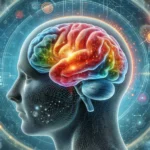Scientists have developed AI models that communicate and teach each other tasks using human-like communication skills, requiring minimal human intervention.
Main Points:
- Researchers have created an AI network that can learn tasks from written instructions and then teach another AI to perform the same tasks without prior experience, using natural language processing.
- The AI models are based on a combination of an NLP model called “S-Bert” and a sensorimotor-recurrent neural network, achieving an 83% success rate on psychophysical tasks from natural language instructions.
- This research not only demonstrates a significant advancement in AI communication but also has potential applications in robotics and the understanding of human brain function.
Summary:
In a groundbreaking study published on March 18 in the journal Nature, scientists at the Geneva University Neurocenter have introduced an AI network that can not only learn from written instructions but also pass on its knowledge to another AI. This process mimics human-like communication and learning, relying on minimal human intervention and no prior training data. The system utilizes natural language processing (NLP), a subfield of AI, to enable machines to understand and replicate human language, thereby facilitating direct communication between AI agents.
The initial AI model, built upon a pre-trained NLP model known as “S-Bert,” is integrated with a sensorimotor-recurrent neural network (RNN) designed to interpret sensory inputs and execute motor actions in response. After being trained on a series of 50 psychophysical tasks through language instructions, the AI achieved an 83% accuracy rate in performing tasks it had never encountered before. It could then teach these tasks to a “sister” AI, which was able to perform the tasks as well, despite having no previous training.
This innovation stems from the human ability to learn and perform tasks based on verbal or written instructions alone, a skill not commonly found in animals. It represents a significant leap forward in AI communication and learning capabilities. While this research does not immediately lead to the development of artificial general intelligence (AGI), it paves the way for future advancements in humanoid robots and AI agents capable of understanding and interacting with each other and humans. The technology has promising applications in industries where robots could efficiently train each other, enhancing productivity and learning processes.
Source: Scientists create AI models that can talk to each other and pass on skills with limited human input
Keep up to date on the latest AI news and tools by subscribing to our weekly newsletter, or following up on Twitter and Facebook.







